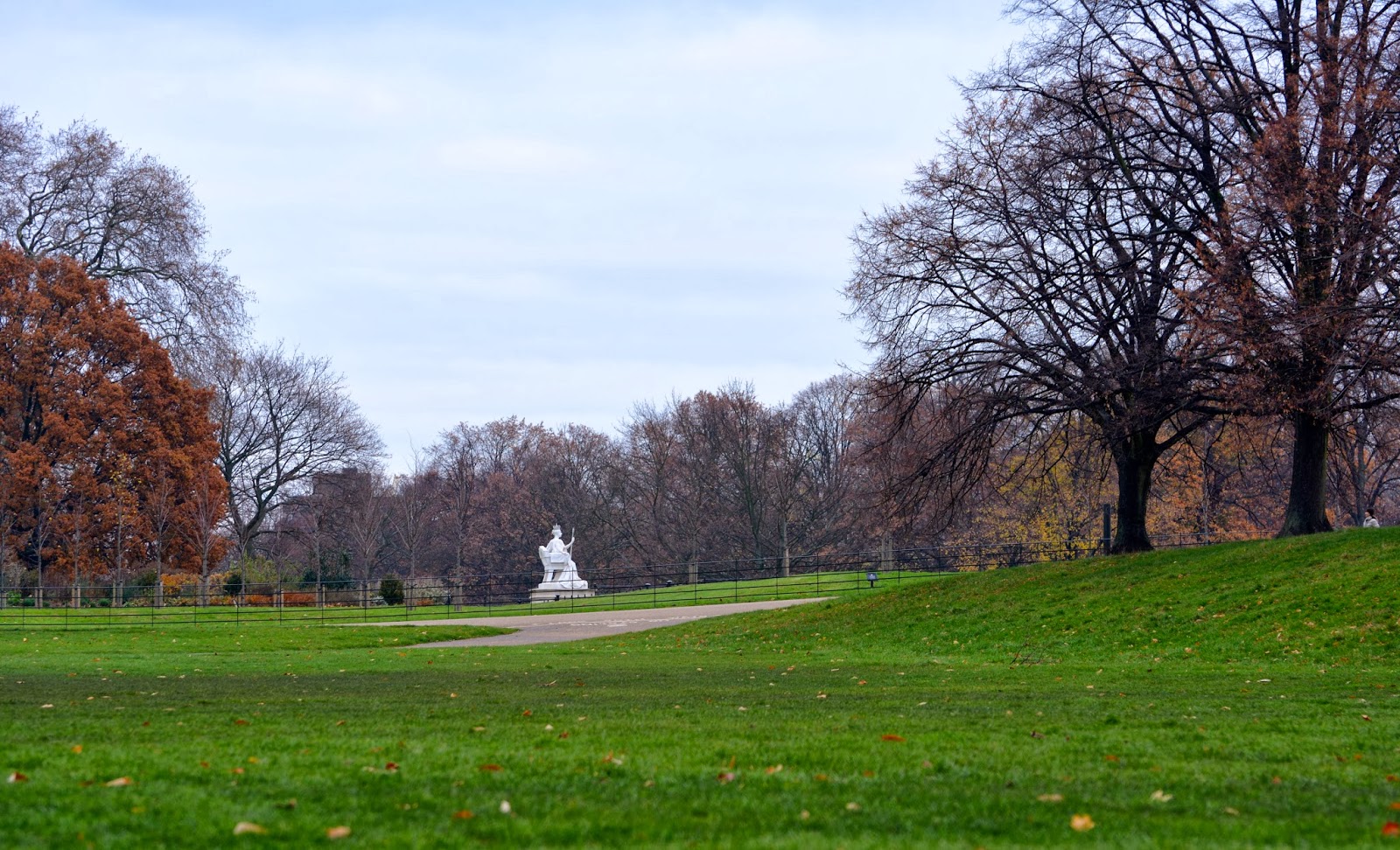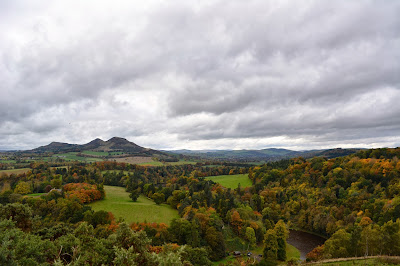 |
| Rural Slovakia (Rural Hungary was very similar) |
 |
These cabbages, seen the next day
outside an art museum,
were not available
at the authentic Hungarian grill... |
After rising and bidding my farewell to Krakow, upon which I now look very fondly, a nine hour bus trip ensued. It was long and arduous, but we took a scenic route through the hills/mountains of Slovakia. We crossed that country entirely and then came in through rural Hungary to Budapest. My initial reaction to Budapest was that the country suffered greatly under the thrall of Communism and Soviet Russia (which it did) and that the economic and infrastructural blight that time left has not yet been truly healed (Whereas in Poland and the Czech Republic recovery has been faster and more successful). Quickly, however, the sun set as we checked into the hotel and headed off to dinner. The dinner was at a traditional Hungarian buffet grill. Though the food wasn't necessarily clearly or traditionally ethnic, it was delicious. This grill had a whole variety of fruits, vegetables, meats, cheeses, and so on set out for us. It also had seven or eight differently seasoned kinds of pork, beef, chicken, seafood, and fish available to take over to the grill and have grilled up before your very eyes along with whatever vegetables, cheese, and potentially quail's eggs that you might choose. It was great food!
I got back to the Best Western Hungaria Hotel (Strange, verrrrry strange...). It's a nice enough place, but it's clearly not a U.S. Best Western or a Marriott or anything. Poorly chosen paintings, walls and carpets with marks, etc. Nonetheless, it's comfortable and we have fairly small numbers of people rooming together. The Krakow hostel had many more, though it had a great location. I spent the rest of the evening writing about my experiences in Krakow.
 |
| A Howitzer leftover from World War II in the Citadel |
 |
| She now holds a leaf for liberty |
This morning we began our tour with our guide, Janos, who used to work with IES and who has worked as a consultant for various Hungarian institutions trying to restore and preserve various architecture and art. He is a good guide; there's just a lot to pack into our marathon sessions. Even the night before he had informed us that Hungarian is a mistaken term used by all Western Europeans and Americans because they are actually the Magyar people; the Huns took over for a while, but were thrown out. He also reminded us that Buda and Pest were two cities that developed independently on either side of the Danube before joining due to size. We began today by going up to the old Citadel fortifications on the city's high ground. Though they are now, of course, a tourist attraction, these fortifications still bear the utilitarian façade that suited their original purpose. We were able to hear while up on this hill about how the fort had been used by inhabitants prior to the 20th Century, by Nazis, and by the Soviets. Each time, changing the monumental statue to represent their own ideologies.


We appreciated the amazing views offered by the Citadel's elevated location. These informed us of the amazing size of Budapest. Unlike Krakow, which is relatively small, and Prague, which is compact, though much larger than Krakow, Budapest is a huge, sprawling city. Being up on the Citadel really brought home the impact of this. I took photos of each of the separate areas of town to record this factor. After completing our survey of Budapest, we descended to the hero's square to see the many statues representing the history of Hungary.
 |
| The central statue with others behind |
The central statue represents the legends of the founding of the Magyar people and of Hungary and Budapest. It also holds the Archangel Gabriel on the top, the second patron saint of Hungary. Gabriel is second because the founder ceded his crown to the Virgin Mary, making her the first patron saint. Behind the main statue in the photo you can see the quarter circle with the horse and a statue in between each pillar. These statues represent the great leaders of Hungary since its founding. Another quarter circle is on the other side. These statues typically depict all Magyar ancestors. For a while during Austrian rule over Hungary, however, the last four spots on the chronology were held by Hapsburgs. Since the throwing off of Austria's yoke, the statues have been replaced by Magyar leaders. From this square two museums are visible, the Palace of Art and the Museum of Fine Arts. We had a guided tour of the Museum of Fine Arts, a building where our guide Janos had worked to create a better, more preservative environment for the paintings. I did not take photos during the tour, but did learn about how the Spanish and Dutch collections are the most impressive here, though the Italian one was impressive, as well. In addition to 20 "priceless" pieces, the overall collection is worth approximately five billion dollars, making it one of the most valuable in the world. Some of the highlights were works by Rembrandt, Goye, Carracci, Tiepolo, Velázquez, Rodin, Brague, and, incredibly, one sculpture attributed to (through copious research) Leonardo da Vinci. It was quite a collection!
 |
| These fellows watch over the Budapest Opera House cafe - my next visit in Budapest |
 |
| Opera House entryway |
After grabbing a sandwich for lunch I was free to explore on my own for the afternoon. Despite the neat things we witnessed in the morning, I still had the feeling that due to economics and prior oppression Budapest's gems are more covered by the grotesque architecture and developments of communist times and not as well maintained. I was therefore a bit skeptical about what I would find on my own. Nonetheless, I decided to go to the opera house tour in the afternoon and then head over to the Stephen's Basilica (despite wondering if these would be the same as things I'd seen in Vienna). I could not have been more impressed by these buildings. The relatively short guided tour of the opera house was the only way to see the building's interior. It had a fair amount of general information, but it was neat to hear the guide talk about the first divided smoking area in europe (also used by young lovers to hide and kiss), the capacity, and the history. The most notable history is that funds were given by Emperor Franz Joseph I, with the stipulation that the opera house could not be bigger than his personal opera house in Vienna (the Wiener Staatsoper, of course). What he did not stipulate however, was that the opera house should be less beautiful. Therefore, I'm sorry to say (since Vienna is my adopted hometown) the Budapest opera house is a smaller, in some ways almost identical, but unquestionably more beautiful version of the Wiener Staatsoper. Apparently Franz Joseph did not like Hungarians anyway, and that combined with his opera-house-jealousy meant he walked out of the house's premiere and never returned.

 |
The royal marble staircase,
taken from the perspective of the mirror |
Some other historical gems were the smoking balcony mentioned above, war history, and the royal stairway. The war history is simply that, unlike the Wiener Staatsoper, the Budapest Opera House has remained largely untouched by war. Apparently only one bomb fell on the house and did not go off. This means that while the Wiener Staatsoper was beautifully restored, the yet more beautiful Budapest Opera House has been preserved more or less in its original condition. The royal stairs are a beautiful marble staircase built into the side of the opera house and intended to be grand enough for the entrance of the Hapsburgs. For the premiere, however, they wished to walk in the front. Convinced that the risk of assassination was too great, they accepted the stairs. To help sate their vanity, an enormous mirror was placed at the head of the stairs. The Empress, a beautiful and vain woman, would later stand at the mirror for hours, remarking its ability to render the subject thinner than normal. It was these differences that made it, rather than boring to go to a second, similar opera house, a fascinating experience.
Here are a few additional photos of the opera house, some of them witty:
 |
| A painting on the ceiling |
 |
| A bust of Béla Bartók, my least favorite composer |
 |
| Wood Carving for Dad |
 |
| More wood carving for Dad... |
 |
| The gorgeous ceiling painting and chandelier |
 |
| The proscenium arch |
 |
| From the outside |
After finishing the opera house tour I set out to find the Stephen's Basilica. As many tourists of Europe point out, there's a concern that too many great European cathedrals can start to run together. I wondered this here, especially having seen such spectacular specimens in Prague and Krakow and because Stephansdom has such a similar name. Once again, however, I could not have been more wrong. This may have been the most impressive cathedral I've yet visited, and it is one of the coolest buildings I have ever been in. Once I went up the tower I felt as though I had walked into some sort of Myst landscape. It was breathtakingly imposing inside. Especially because I walked in during the organ processional for a wedding (the couple of which I saw outside, later). Despite the cavernous size of the cathedral, the organ filled the entire building. I will let pictures do some of the talking here.
 |
| The inside of the dome! |
 |
| Beautiful interior... |
 |
| The Altar |
 |
| A witty little sign |
Climbing the tower was what really fascinated me. From this perspective it was possible to see some of the inner-workings of the building and how they might have been used or navigated before the modern era. This is what gave it the mysteriously fascinating atmosphere that I so enjoyed. Once I actually arrived at the top of the tower I was able to see the sun setting over the sprawling, yet in many places beautiful city of Budapest. Fortunately I was able to get a young british couple to take my picture up there, though I felt bad about interrupting the moment. Tomorrow, onto more guided tours of Budapest before a Sunday return to Vienna! Now, photos from my trip to the top:
 |
| The spiral staircase used to get to the first chamber, followed by more to get to the top! |
 |
| Gangplank corridor leading into the depths of the church - mysterious! |
 |
| The top of the interior dome on the right with off-limits staircases leading even higher to the top of the dome... |
 |
| The city from the tower... |
~~~~~~~~~~~~~~~~~~~~~~~~~~~~~~~~~~~~~~~~~~~~~~~~~~~~~~~~~~~~~~~~~~~~~~~~
 |
| Me atop the tower! |






























Comments
Post a Comment